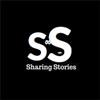Don Quixote Summary
Don Quixote, written by Miguel de Cervantes, is a renowned literary masterpiece that has left a significant impact on the world of literature. This epic novel is considered one of the greatest works of fiction ever penned, with its intricate blend of adventure, satire, and profound themes. The story follows the exploits of the delusional yet noble-hearted Don Quixote as he embarks on his chivalrous quest, showcasing a poignant exploration of reality and illusion.

Table of Contents
Brief Overview of Don Quixote
- Don Quixote is a two-part novel, first published in 1605 and followed by a sequel in 1615.
- It narrates the adventures of Don Quixote, an elderly man who becomes convinced he is a chivalrous knight.
- The novel explores themes of idealism, chivalry, madness, and the clash between reality and fantasy.
Importance of Don Quixote in Literature
- Considered the foundational work of modern Western literature.
- Pioneered the genre of the modern novel.
- Proved instrumental in the development of literary realism and marked a departure from conventional romances of the time.
Thesis Statement
Don Quixote stands as a timeless work that transcends its origins in Spanish literature to resonate with readers worldwide, challenging perceptions of reality and heroism through its complex characters and narratives.
Overview of the Author
Introduction to Miguel de Cervantes
- Miguel de Cervantes (1547-1616) was a Spanish novelist, playwright, and poet.
- His life was marked by diverse experiences, including military service, captivity in Algiers, and struggles as a writer.
- Despite financial hardships, Cervantes created enduring literary works that continue to captivate audiences.
Background and Influences
- Influenced by the convoluted socio-political landscape of Spain during his time.
- Cervantes drew inspiration from his own experiences, such as his military service and imprisonment, to infuse authenticity into his writings.
- The amalgamation of personal encounters and broader societal influences shaped Cervantes’ unique narrative style.
Context of Don Quixote
Historical Background of Spain during Cervantes’ Time
- Spain in the 16th century was a nation characterized by political unrest, religious conflict, and cultural dynamism.
- The decline of the Spanish Empire and the rise of Protestantism influenced the intellectual climate of the era.
- These tumultuous events provided fertile ground for Cervantes to weave a narrative that reflected the uncertainties and complexities of his society.
Social and Political Climate
- Spain during Cervantes’ time was marked by a rigid social hierarchy and class distinctions.
- Censorship and religious orthodoxy shaped intellectual discourse, leading writers to employ allegory and satire to convey their messages.
- Cervantes’ critique of societal norms and institutions through Don Quixote mirrored the turbulent social context in which he lived.
Literary Influences on Don Quixote
- Don Quixote drew inspiration from the medieval chivalric romances popular during Cervantes’ era.
- The novel parodied these traditional tales while incorporating elements of psychological depth and moral ambiguity.
- Cervantes revolutionized the literary landscape by infusing classic themes with a modern sensibility.
Plot Summary of Don Quixote
Introduction of the Main Character, Don Quixote
- Don Quixote, a delusional nobleman, adopts the persona of a knight-errant to revive the chivalric code of bygone times.
- He renames himself and sets out on a quest to restore justice and virtue to a world he perceives as lacking in honor.
- Don Quixote’s fervent idealism and eccentric behavior serve as a source of humor and introspection throughout the narrative.
Don Quixote’s Quest as a Knight Errant
- Don Quixote embarks on a series of misadventures, mistaking windmills for giants and inns for castles.
- His encounters with various characters, both real and imagined, test the boundaries of his romantic ideals.
- Despite his comical blunders, Don Quixote’s steadfast belief in his mission reveals a poignant exploration of individual agency and collective delusion.
Adventures and Misadventures
- The novel navigates a series of episodic adventures, each highlighting Don Quixote’s unwavering commitment to his knightly duties.
- From challenging herdsmen to rescuing damsels in distress, Don Quixote’s escapades blur the line between fantasy and reality.
- The juxtaposition of his noble intentions with the absurdity of his actions underscores the complexity of human aspiration and folly.
Encounter with Sancho Panza
- Sancho Panza, Don Quixote’s loyal squire, provides a counterpoint to his master’s idealism.
- Sancho’s pragmatic worldview and humorous outlook on life offer a grounding influence amidst Don Quixote’s fantastical pursuits.
- Their evolving relationship forms the emotional core of the narrative, highlighting themes of friendship, loyalty, and mutual understanding.
Humorous Elements and Satire
- Throughout Don Quixote, Cervantes employs humor and satire to lampoon societal conventions and literary tropes.
- The novel’s mock-heroic tone juxtaposes noble aspirations with slapstick comedy, creating a rich tapestry of comedic and philosophical insights.
- Cervantes’ witty commentary on human nature and storytelling conventions adds depth to the narrative, inviting readers to reflect on the nature of truth and perception.
Expansion of Don Quixote’s Adventures
- Don Quixote’s Continued Quest: Despite being defeated and returning home in the first part, Don Quixote decides to set out on new adventures as a knight errant once again.
- Encounters with New Characters: Throughout his journey, Don Quixote comes across various characters who challenge his chivalric ideals and beliefs, leading to both comedic and thought-provoking situations.
- Influence of External Factors: Cervantes uses these encounters to delve into themes of reality versus illusion, showcasing how Don Quixote’s perceptions are often shaped by external influences.
Evolution of Don Quixote and Sancho’s Relationship
- Deepening Bond: As the story progresses, the relationship between Don Quixote and Sancho evolves from a purely master-servant dynamic to a more complex and genuine friendship.
- Role Reversals: Cervantes depicts moments where Sancho’s practicality and wisdom contrast with Don Quixote’s idealistic nature, highlighting the complementary nature of their personalities.
- Exploration of Loyalty: The evolving dynamics between the two characters provide insights into themes of loyalty and companionship, showcasing the depth of their bond despite their contrasting viewpoints.
Parallel Narratives and Subplots
- Interwoven Storylines: Cervantes introduces parallel narratives and subplots that intersect with Don Quixote’s main quest, adding layers of complexity to the narrative structure.
- Satirical Elements: These additional storylines often serve as platforms for Cervantes to satirize various aspects of society, politics, and literature, enriching the novel’s satirical elements.
- Character Development: The subplots not only contribute to the overall comedic and satirical tone of the novel but also offer opportunities for character growth and introspection.
Culmination of Don Quixote’s Journey
- Final Confrontation: As Don Quixote’s adventures reach their peak, he faces challenges that force him to confront the consequences of his actions and ideals.
- Themes of Redemption: Cervantes weaves themes of redemption and self-realization into the narrative, compelling Don Quixote to reflect on the true nature of heroism and virtue.
- Resolution and Closure: The conclusion of Don Quixote – Part 2 brings a sense of closure to Don Quixote’s tumultuous journey, offering readers a poignant reflection on the complexities of human nature and dreams.
Themes of Reality vs. Illusion
- Deeper Exploration: In the second part, Cervantes delves further into the theme of reality versus illusion, blurring the lines between truth and fantasy in Don Quixote’s quest.
- Existential Reflections: Through Don Quixote’s continued pursuit of chivalric ideals in a changing world, Cervantes raises existential questions about identity, perception, and the nature of reality.
- Philosophical Underpinnings: The juxtaposition of Don Quixote’s romanticized vision and the pragmatic realities he faces serves as a lens through which readers can contemplate the nature of truth and delusion.
Metafictional Elements
- Narrative Self-awareness: Cervantes introduces metafictional elements that challenge traditional storytelling conventions, inviting readers to engage with the novel on multiple levels.
- Author-Character Interplay: Through metafiction, Cervantes blurs the boundaries between authorship and character agency, highlighting the role of storytelling in shaping both fictional and real-world narratives.
- Postmodern Considerations: The metafictional aspects of Don Quixote underscore the novel’s enduring relevance and influence on postmodern literature, emphasizing the power of storytelling to transcend temporal and spatial constraints.
Impact on Modern Literature and Culture
- Literary Legacy: Don Quixote – Part 2’s profound impact on modern literature and culture is evident in its enduring themes, characters, and narrative innovations that continue to inspire writers and readers alike.
- Cultural Resonance: The novel’s exploration of timeless themes such as idealism, friendship, and the search for meaning resonates with contemporary audiences, underscoring its relevance across different cultural contexts.
- Continued Influence: Whether through adaptations, reinterpretations, or scholarly analyses, Don Quixote – Part 2 remains a cornerstone of literary history, shaping the literary landscape for generations to come.
Frequently Asked Questions (FAQs)
What is the main theme of Don Quixote?
The main themes of Don Quixote include the contrast between reality and illusion, the nature of chivalry, the power of imagination, and the critique of societal norms.
How does Don Quixote reflect the socio-political climate of its time?
Don Quixote reflects the socio-political climate of the Spanish Golden Age by satirizing the social hierarchy, political structures, and cultural ideals prevalent during that era.
What is the significance of the relationship between Don Quixote and Sancho Panza?
The dynamic between Don Quixote, the idealistic knight errant, and Sancho Panza, the pragmatic squire, highlights themes of friendship, loyalty, and the balance between reality and fantasy.
What literary devices does Miguel de Cervantes use in Don Quixote?
Miguel de Cervantes employs various literary devices such as irony, parody, metafiction, and intertextuality to create a multi-layered narrative that both entertains and critiques the society of his time.
How does Don Quixote influence modern literature and culture?
Don Quixote has had a lasting impact on modern literature and culture by inspiring works across different genres, contributing to the development of the novel as a literary form, and fostering discussions on topics like identity, madness, and heroism.
Conclusion
In conclusion, Don Quixote by Miguel de Cervantes remains a timeless masterpiece that continues to captivate readers with its rich characters, intricate themes, and satirical commentary on society. Through the adventures of Don Quixote and Sancho Panza, Cervantes delves into the complexities of human nature, the power of storytelling, and the blurred lines between reality and illusion. As a foundational work in the realm of classic literature, Don Quixote’s enduring legacy serves as a testament to the enduring relevance of its messages and the inventive storytelling techniques of its author.





